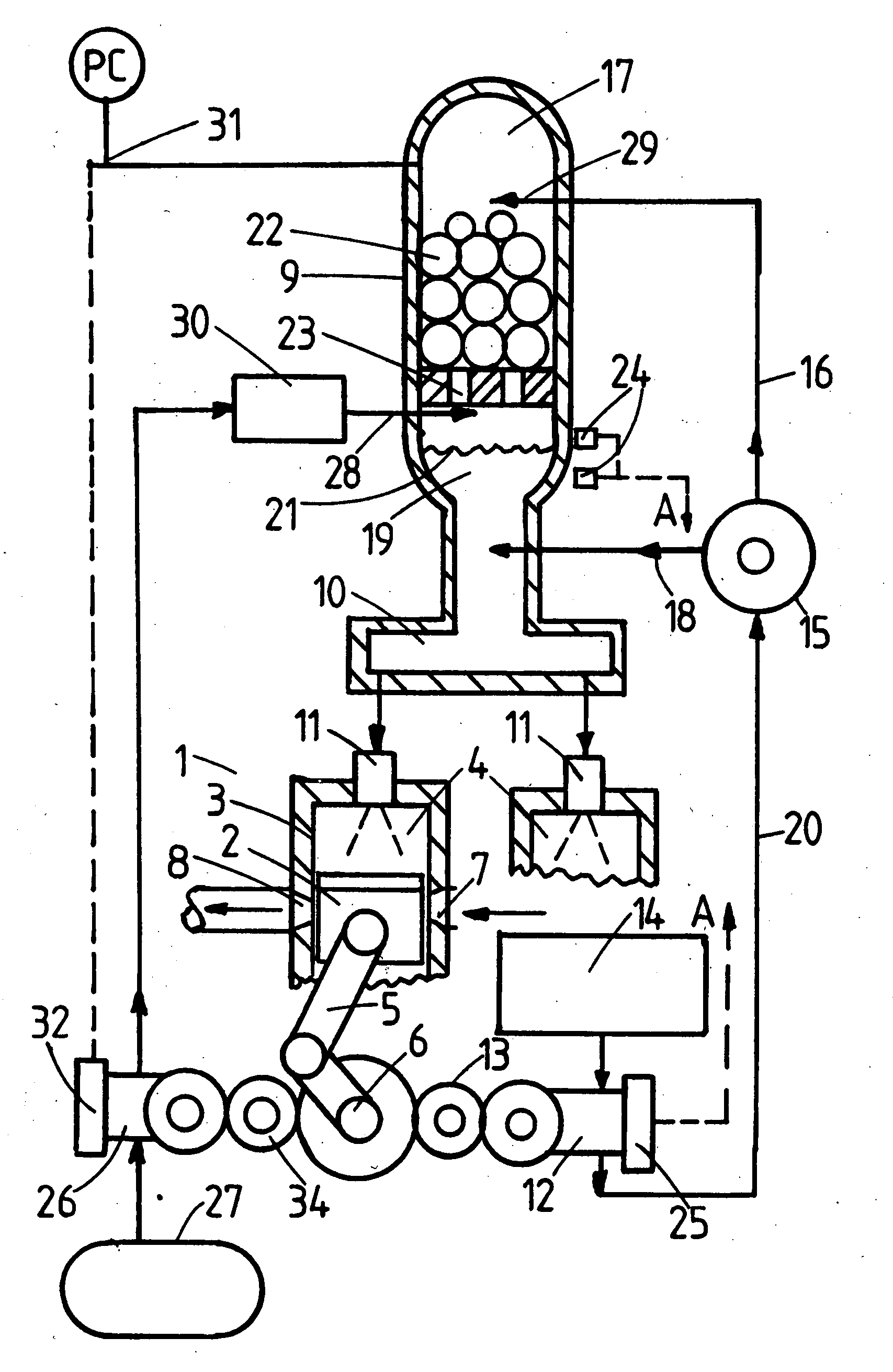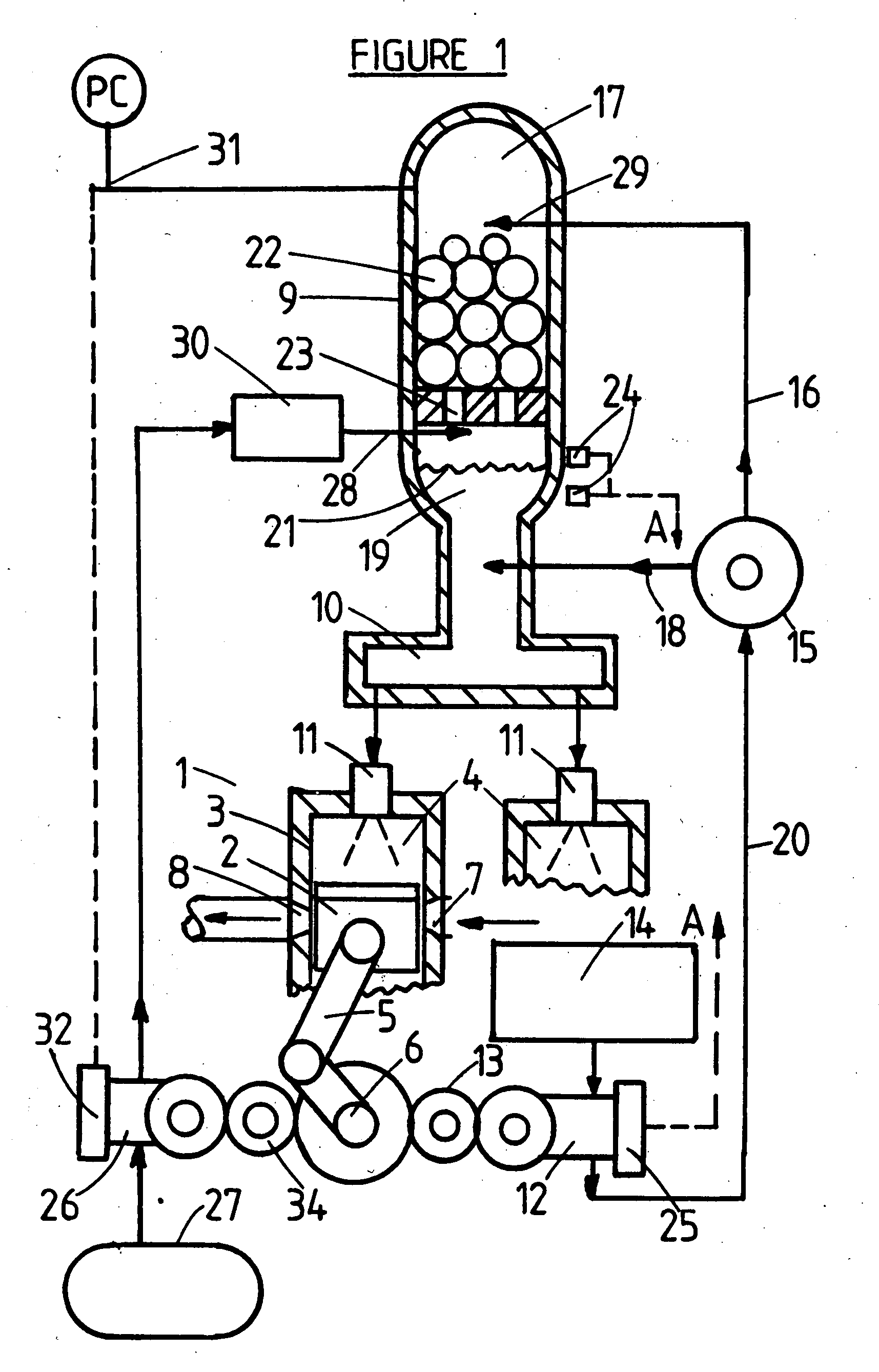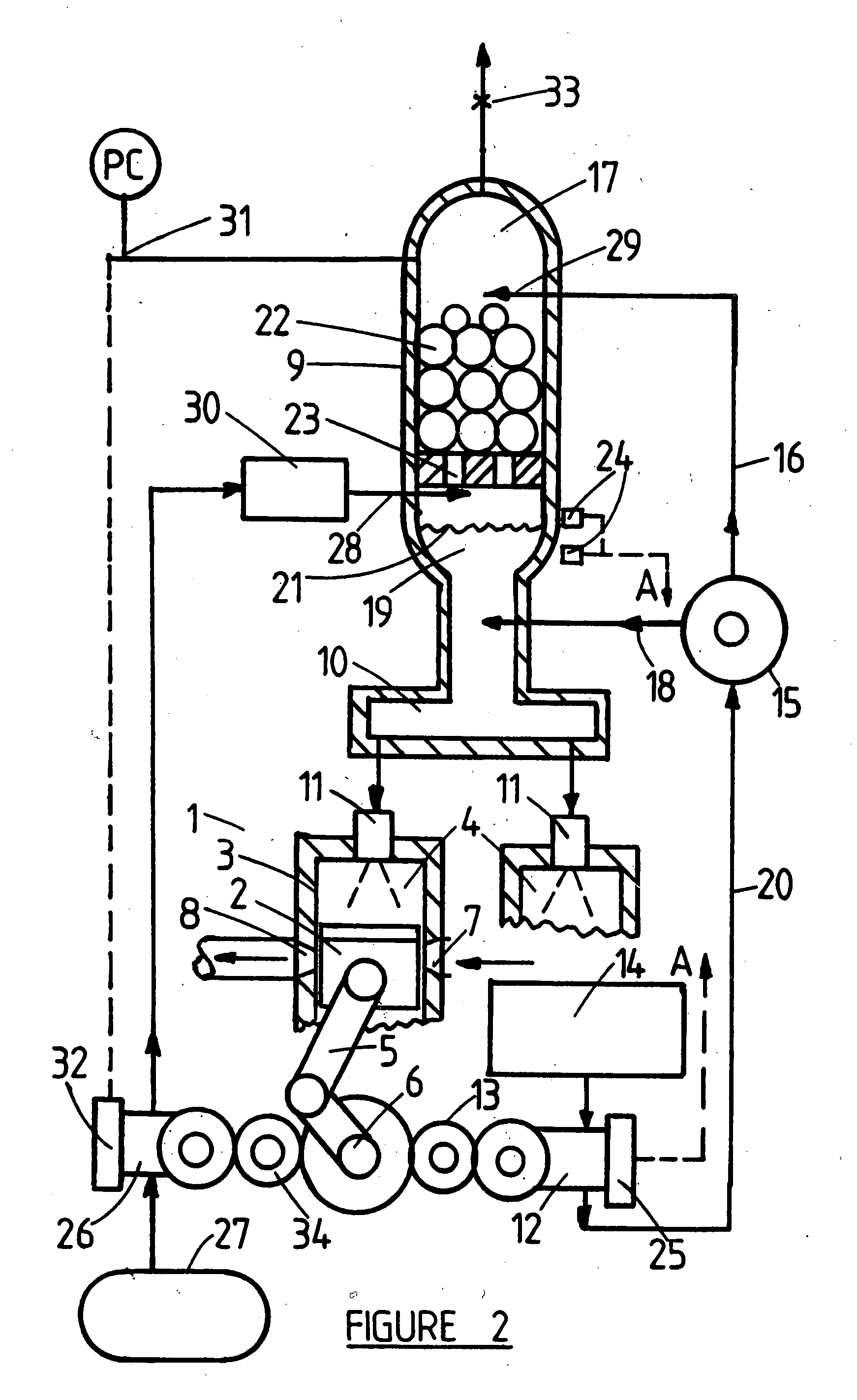Common rail supplementary atomizer for piston engines
- Summary
- Abstract
- Description
- Claims
- Application Information
AI Technical Summary
Benefits of technology
Problems solved by technology
Method used
Image
Examples
Embodiment Construction
[0024]The apparatus of this invention operates to dissolve atomizing gas, at high pressure, into the liquid water portion of a fuel in water slurry, where liquid water is the continuous phase. When this gas saturated slurry is subsequently injected, into the lower pressures prevailing in the engine cylinder gas volume, these dissolved gases expand out of the water phase within each injected slurry droplet. This gas expansion between fuel particles separates the particles and prevents particle agglomeration during subsequent water evaporation, prior to fuel ignition and combustion. In this way the full benefits of fuel preatomization into very small fuel particles, suspended in a continuous water phase, can be achieved by use of the apparatus of this invention.
[0025]Various combinations of materials can be used for the suspended particle portion, and the continuous phase portion, of slurries suitable for use with the apparatus of this invention. The supplementary atomizing gas is mat...
PUM
 Login to View More
Login to View More Abstract
Description
Claims
Application Information
 Login to View More
Login to View More - R&D
- Intellectual Property
- Life Sciences
- Materials
- Tech Scout
- Unparalleled Data Quality
- Higher Quality Content
- 60% Fewer Hallucinations
Browse by: Latest US Patents, China's latest patents, Technical Efficacy Thesaurus, Application Domain, Technology Topic, Popular Technical Reports.
© 2025 PatSnap. All rights reserved.Legal|Privacy policy|Modern Slavery Act Transparency Statement|Sitemap|About US| Contact US: help@patsnap.com



